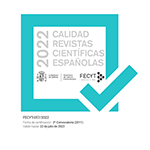Classification of the Sardinian pine woodlands
Abstract
Mediterranean pine woodlands are one of the most common wooded vegetation types across the Mediterranean Basin and are included in two habitats of European interest as they have great conservation importance. We studied the woodlands of the class Pinetea halepensis dominated by Pinus halepensis, P. pinaster, and P. pinea in Sardinia (Italy) with the aim to clarify their syntaxonomic position. We compiled a dataset of 66 original vegetation relevés, complemented with the holotypes of similar vegetation types formerly described for Italy and Corsica (France). We classified P. halepensis woodlands, native to the Island of San Pietro, to the association Erico arboreae-Pinetum halepensis. We classified P. halepensis woodlands growing on limestones of the south-western coast of Sardinia to the new association Smilaco asperae-Pinetum halepensis and woodlands typical of coastal dunes to the new association Asparago horridi-Pinetum halepensis. We also described the northeastern Sardinia P. pinaster woodlands as the new association Arbuto unedonis-Pinetum pinastri, of which we recognised two new subassociations, typicum and cephalantheretosum longifoliae, ecologically distinguished by the xerophilous and mesophilous conditions, respectively. Furthermore, we classified P. pinea woodlands, putatively native only to stabilised sand dunes of south-western Sardinia, in the new association Querco calliprini-Pinetum pineae. This study represents the first complete survey and classification of Sardinian pine woodlands, allowing a better understanding of their ecology, floristic composition and differences from other Mediterranean pine woodlands.
Downloads
Article download
License
Mediterranean Botany is an open access journal to promote global exchange knowledge. It facilitates unrestricted access to its contents from the moment of publication in its electronic edition. The originals published are property of the Universidad Complutense and it is mandatory to cite such source in case of total or partial reproduction. All contents are distributed under a Creative Commons License 4.0 (CC BY 4.0). This circumstance must be expressly stated in this way when necessary. You can check the informative version and legal text of the license.














